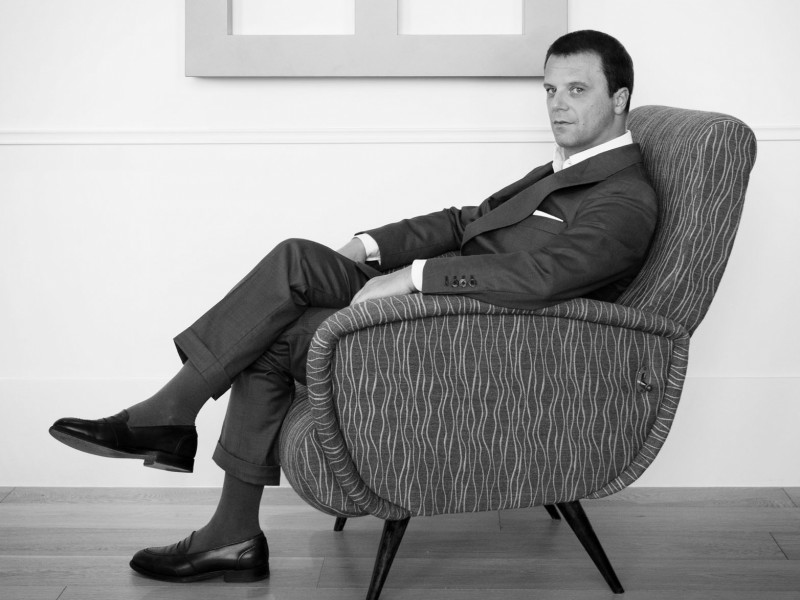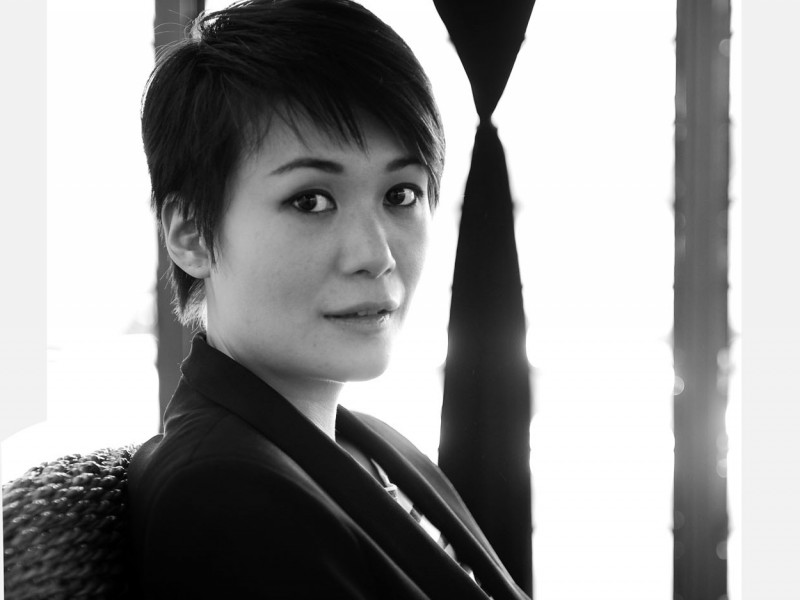Belgian fashion designer Walter Van Beirendonck quickly deflects the word ‘obsession’. “I don’t think I should talk about obsessions but rather fascinations or rituals,” says Van Beirendonck, who cites a list of rituals that are continually drawn into his world: animal, ethnic, folk and art rituals to the darker side, including sadomasochistic and voodoo rituals. Both of these dimensions are played out in his collections. Men in skin-tight latex complete with outstretched latex penises are juxtaposed with men in corseted garments. Those who saw Walter Van Beirendonck’s 2011 fashion exhibition, Dream the World Awake, shown at the Fashion Museum in Antwerp, would have seen this duality come to life. “Most creative people are obsessed with something,” adds Van Beirendonck.
“As a youngster, I was always fascinated by David Bowie. It really started with his Ziggy Stardust look,” says Van Beirendonck, who was immediately drawn to the androgynous character Bowie created in the early 1970s. It wasn’t just Bowie’s distinctive jagged flame-red hair or outlandish makeup that captivated Van Beirendonck, but rather the singer’s words and delivery. “I loved his looks and the way he communicated fashion through image and music.” Bowie’s highly individualist appearance intrinsically linked both fashion and communication. “I followed Bowie through his entire career. You could say it was an obsession. But it’s more about simply having an enormous respect for such a creative genius.”
Van Beirendonck has always been fascinated by the world around him, particularly in the characters he meets. In Fashion! Antwerp! Academy! 50 years of Fashion Academy, the book that marked the 50 year anniversary of the Antwerp Fashion Academy, leading fashion journalist Suzy Menkes wrote, “Van Beirendonck’s fourth year collection book (as a student) took ‘insects’ as its theme and nature—its importance, its endangered situation and the power of its shape and colour—has been intrinsic to his work.”
Characters have continued to inspire Van Beirendonck’s collections, including toys and creatures that have been abundant in his work. “I always work in a highly spontaneous way—from my gut. But I’ve always had a strong imagination and love it when there’s an explosion of ideas,” says Van Beirendonck. Many designs push the boundaries of men’s fashion. Bearded models, in Van Beirendonck likeness, regularly walk down the catwalk wearing underwear with a signature ‘W’ emblazoned upon their crotch. Other designs literally encase the wearer, with phallic-like extensions protruding from head to toe. “I’m always questioning the conditioned way of thinking. I love experimenting with shape, colour and social codes. You often find this method in the context of women’s fashion,” says Van Beirendonck.
The designer’s collections seem to have responded to all facets of life over the decades. Avatars, aliens, African warriors, Japanese geishas, sadism and masochism practitioners, techno fairytale characters and cyber culture all find their way into Van Beirendonck’s imagination. While phallic symbols are integrated into some of his collections, so are other elements from his fantasy world, including mushrooms; clouds, stars and moons; snakes, bears, rabbits and other animals. Nudity, including representations of the designer fully nude, is also likely to be expressed in various guises. “Sex is part of this world. It’s not an obsession. It’s just part of the broader state of mind,” says Van Beirendonck.
When asked about some of the strongest influences and those that have shaped his fashion world, Van Beirendonck is careful about his choice of words. “Influence is the wrong word in the fashion world. I’m fascinated—not obsessed—by contemporary artists such as Paul McCarthy, Mike Kelley, Folkert de Jong, and artists such as Grayson Perry. But that doesn’t mean I copy their ideas in my work. It’s more about the way their work opens up my mind and allows me to think and fantasise.”
In his fantasy world, good and evil compete within a landscape where a Bolivian-style devil mask or Darth Vader mask adorned with insects is not unusual. “It really could be any idea that starts up my fantasy world. Most of the time, I’m very spontaneous and research everything that inspires me at the time. When I finally have the content in my head, it’s only at that point that I divert to my sketch pad,” says Van Beirendonck, who adds that each collection is a learning process. “You want to constantly push your own boundaries. Each collection is like starting from something that’s new,” he adds. And while some of Van Beirendonck’s collections have stood out, some of his greatest fantasies live on, not only in his mind, but also with the broader public consciousness.
When asked to nominate collections that have resonated for several years, Van Beirendonck cites ‘Revolution, Sex Clown, Lust Never Sleeps and Home Sweet Home as some of his pivotal fashion moments. “You always want to create the best thing possible. And with each collection, you become more mature and ideas are easier to conceptualise,” says Van Beirendonck. One of Van Beirendonck’s memorable images is of himself wearing a pointed red hat with a T-shirt emblazoned with the words: ‘where I live, there are rainbows’ (taken for the Fairytale collection in 2006). “It’s how I think about fashion and dreaming. Dreaming is a strong tool to fight your demons and the world’s problems. I’ll continue to dream.”
The Revolution collection from Autumn/Winter 2001-2002 ingeniously evoked the 18th century dandy gentleman. The shirt collars and neckties were highly exaggerated—almost apron-like in their proportions. A basic starched shirt was subverted by combining it with bondage gear to create a contrasting aesthetic. While the proportions of the Revolution collection were highly exaggerated, Van Beirendonck further sought to emphasise these distortions by clashing polka dotted ties with gingham shirts. Tapestry-style coat jackets, reminiscent of the 1970s, were also added as the perfect foil for the wild shirt-and-tie combinations. “I’ve always felt comfortable clashing ideas and patterns together. Our world is really a huge clash in itself,” says Van Beirendonck.
The creatives who work closely with Van Beirendonck, including British milliner Stephen Jones, share the designer’s ability to move into worlds where other designers fear to tread. Jones has been designing hats for Van Beirendonck since 1997. “At the time, Walter was gaining notoriety not only for his clothes, but for the way in which they were shown: on giant elevators, in the Paris Lido and, most exciting for me, with outrageous headgear,” says Jones. “My imagination soared and I was thrilled to be one of the new acts in Walter’s crazy world,” adds Jones.
Obsession does creep into the conversation when mentioned with the word beauty—particularly in association with his 1998 winter collection, A Fetish for Beauty—“We are now so overwhelmed by images of dead people, war, disaster, and killing, that we’ve lost the sensibility for beauty, an incredible and important sensibility for human beings. Everybody has the right to enjoy beauty,” says Van Beirendonck, who also sees the beauty when ideas clash around him. “I’m always keen to reflect this chaotic world in my collections.”
Van Beirendonck continues to challenge traditional concepts in fashion. In a sense, his ‘reflection’ or ‘obsession’ to make us think about fashion hasn’t changed dramatically since the time his first collection was presented in London, alongside his Belgian comrades. “What has progressed since that time is the advancement of communication. When we were in London with the Antwerp Six, we were communicating with only London. Now, you’re communicating your ideas with the entire world, a huge difference for the fashion world,” says Van Beirendonck. And whether the word obsession is used or not, according to Van Beirendonck, “creative people are always obsessed with something. I would say that it is completely normal.”
For more visit www.waltervanbeirendonck.com
Related Features
-
51
-
-
-

